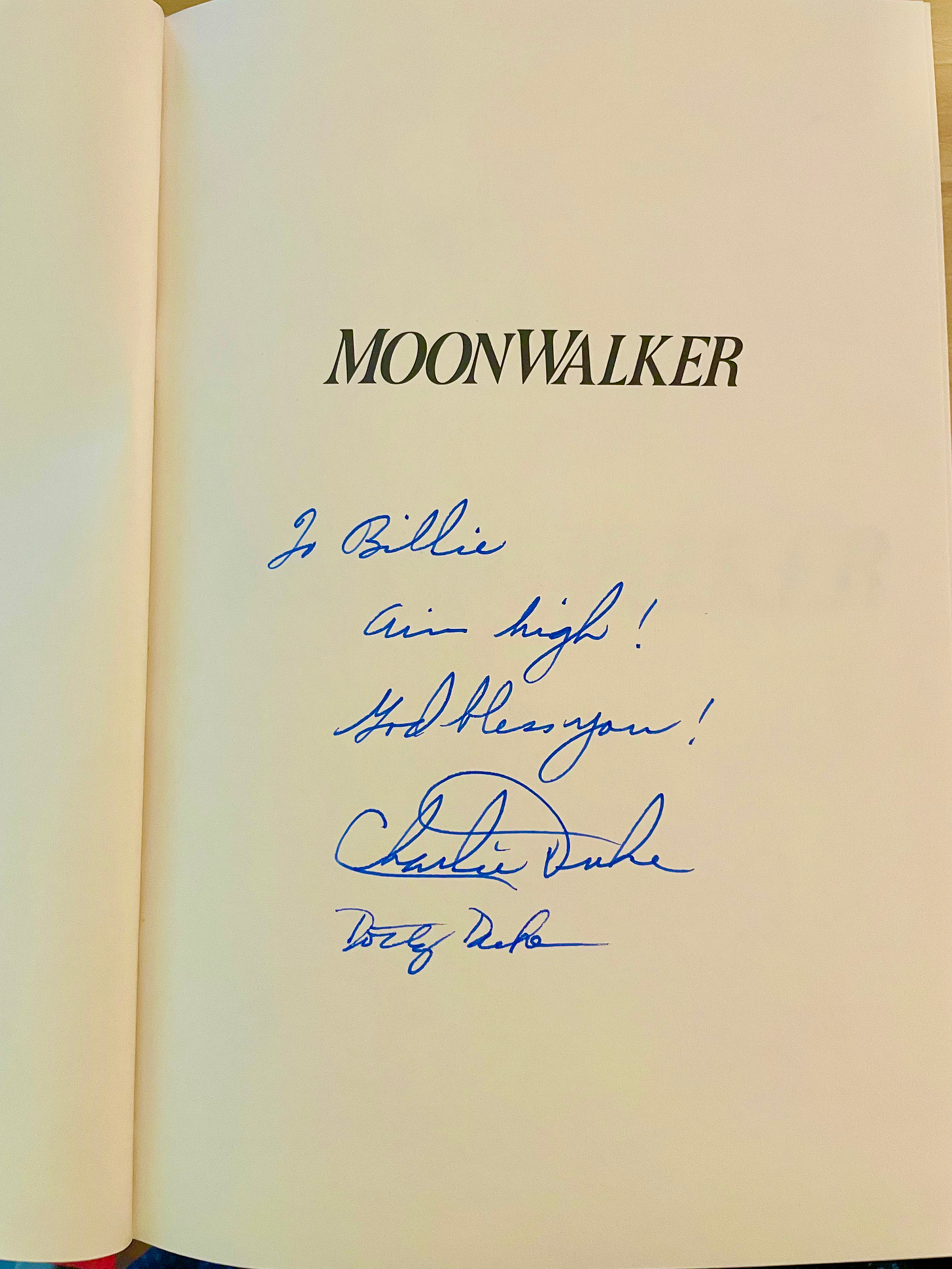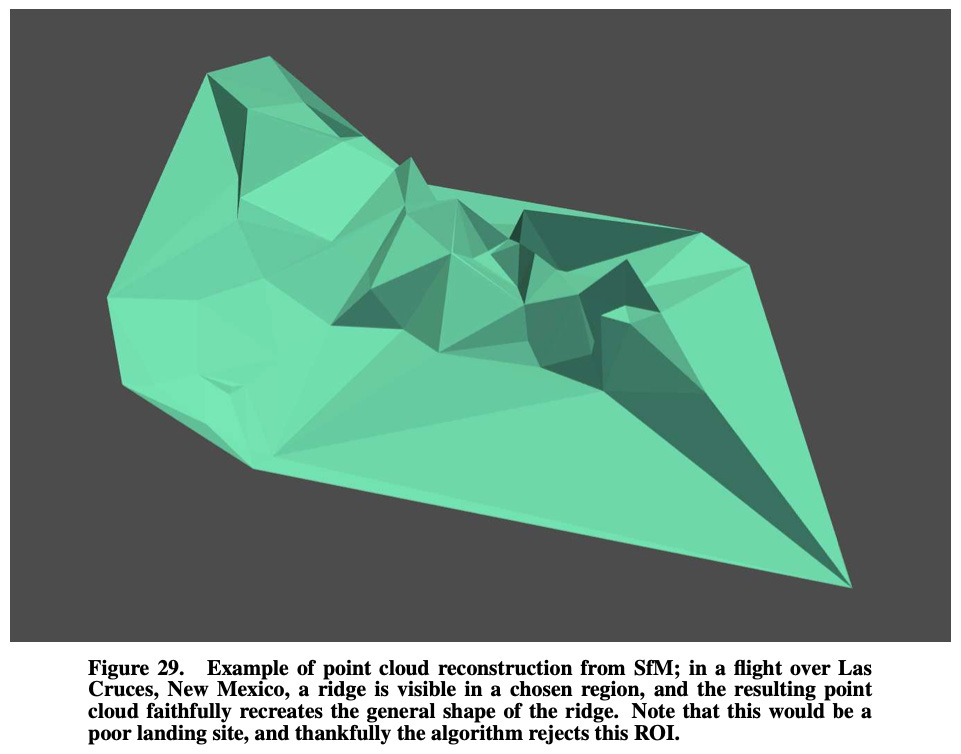My grandmother, being a long time resident of southeast Houston, managed to get herself a signed copy of Charlie Duke's memoir, Moonwalker. I received this copy after her passing, and was pleasantly surprised to see upon first opening the handwriting of an Apollo astronaut and his wife, Dotty.
Charlie devotes more than eight chapters to his Apollo 16 mission, and in his entire account, the thing that stands out to me the most is the amount of human intervention that was required. The entire landing sequence holds its own chapter filled with navigation callouts from Charlie to the commander, John Young, who has to make split-second changes to the landers speed. In light of the recent surge in lunar missions, including the first successful commercial lunar landing, it's worth examining the persistent challenges of lunar descent. While modern missions benefit from technological advancements, many fundamental difficulties remain. Beyond budgets, geopolitics, or political will, the problem of assured autonomy is the largest technical hurdle that stands in the way of continuous robotic—and human—operations on the moon.
Because the descent to the lunar surface is so fast (~ 7 minutes) and data transmission at lunar distances is slow, the lander is required to complete its descent autonomously. This is the most intense phase of the mission and there’s nothing a control room on Earth can do to fix problems that may arise. There is total reliance on the onboard software. A crucial difference from a current lunar landing to Apollo is that in the final phases of landing, the commander of the crew would take controls from the computer and manually steer the Lunar Module. At the same time, the Lunar Module Pilot, Charlie Duke’s role, would call out any hazardous rocks or slopes to avoid.
In modern missions, we’ve attempted to replicate this task of identifying hazards and avoiding them with the autonomous flight software, but this is no easy task. Any computer science major knows that computers can easily do what we humans find difficult (e.g., complex arithmetic) but have a difficult time doing what comes naturally to humans (e.g., identifying hazards). Lunar landers take images of the surface below and, with said images, automatically select potential hazards. This is not at all a “fully solved” problem, given the number of journal papers devoted to the topic every year (more than 100 conference and journal papers published in 2023 alone). Apollo relied on the human brain (i.e., natural computer), which we know is capable of great adaptation to evolving situations.
The reason hazard detection is so important is because we do not have centimeter level detailed maps of the moon’s entire surface. Even when we do at some future time, it may be difficult to justify carrying all that data on the lander’s computer. Once the Apollo crew neared the surface, they could see at greater detail the slope and jaggedness of the landscape. If the surface below them was not safe enough to land, the commander would steer the lander elsewhere. In the autonomous lander case, the camera captures multiple overlapping images of the lunar surface, and a structure from motion (SfM) algorithm uses those images to create a 3D understanding of the surface.
Image taken from: Getchius, J., Renshaw, D., Posada, D., Henderson, T., Hong, L., Ge, S., and Molina, G., “Hazard Detection And Avoidance For The Nova-C Lander,” , 2022.
It will be interesting to see if any neural network (i.e., AI) approaches will be adopted in the next few decades as we gather more data from past lunar landings. It also helps that the tech world has made learning and using AI models ubiquitous in the past few years. But for now, as far as I can tell, NASA and various companies are using deterministic algorithms like SfM to detect hazardous landing areas.
Another crucial aspect is fuel. On Apollo 16, they landed with nearly 60 seconds of fuel left—which to some readers may sound like a close call, but that actually is an abundance! In the world of space engineering today, every second of fuel you don’t use is “wasted” weight and money. Although, in my humble opinion, it’s only wasted if you had previous guarantees of not needing it. It’s so important to use as little fuel as possible that, not only do propulsion engineers spend years optimizing spacecraft engines, but GNC engineers are also tasked with computing the “minimum fuel” flight paths. Because we try to shave off every second of fuel we (think we) won’t need, we’re making the problem even harder on ourselves. If navigation is not accurate with respect to the true altitude and speed of the vehicle, the control algorithms may “try” too hard. This in turn may spend too much fuel and, eventually, result in a complete loss of it.
There are plenty of other challenges in autonomous landing I could touch on, but I think hazard detection and fuel management are enough to grapple with already.
Landing autonomously on the Moon is hard. But things that are intriguing and worthwhile are hard. The intellectual and technological gains of trying to solve this seemingly contrived problem (p.s., it’s not) will make their way towards practical benefits on Earth, as is the case with all space research.



